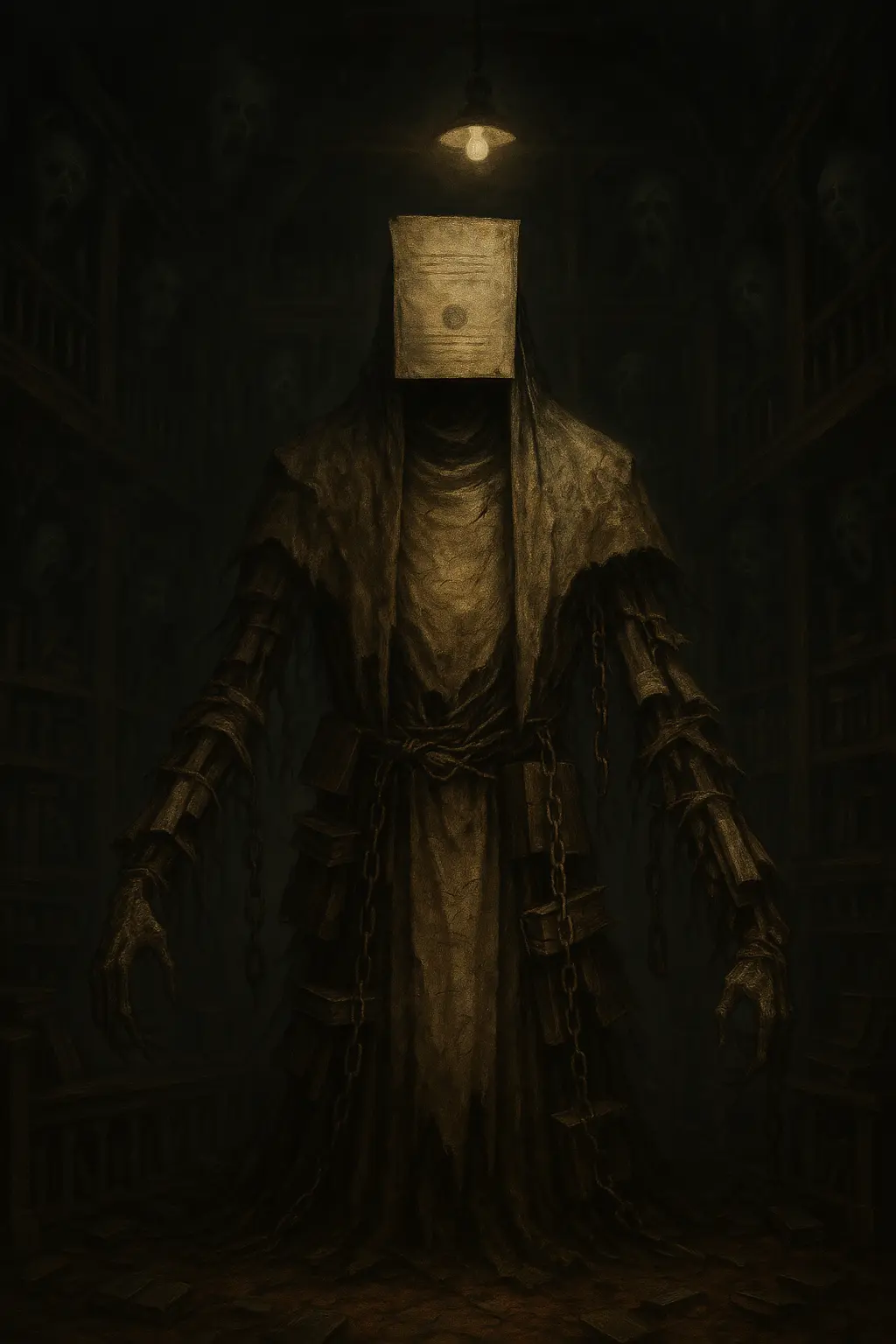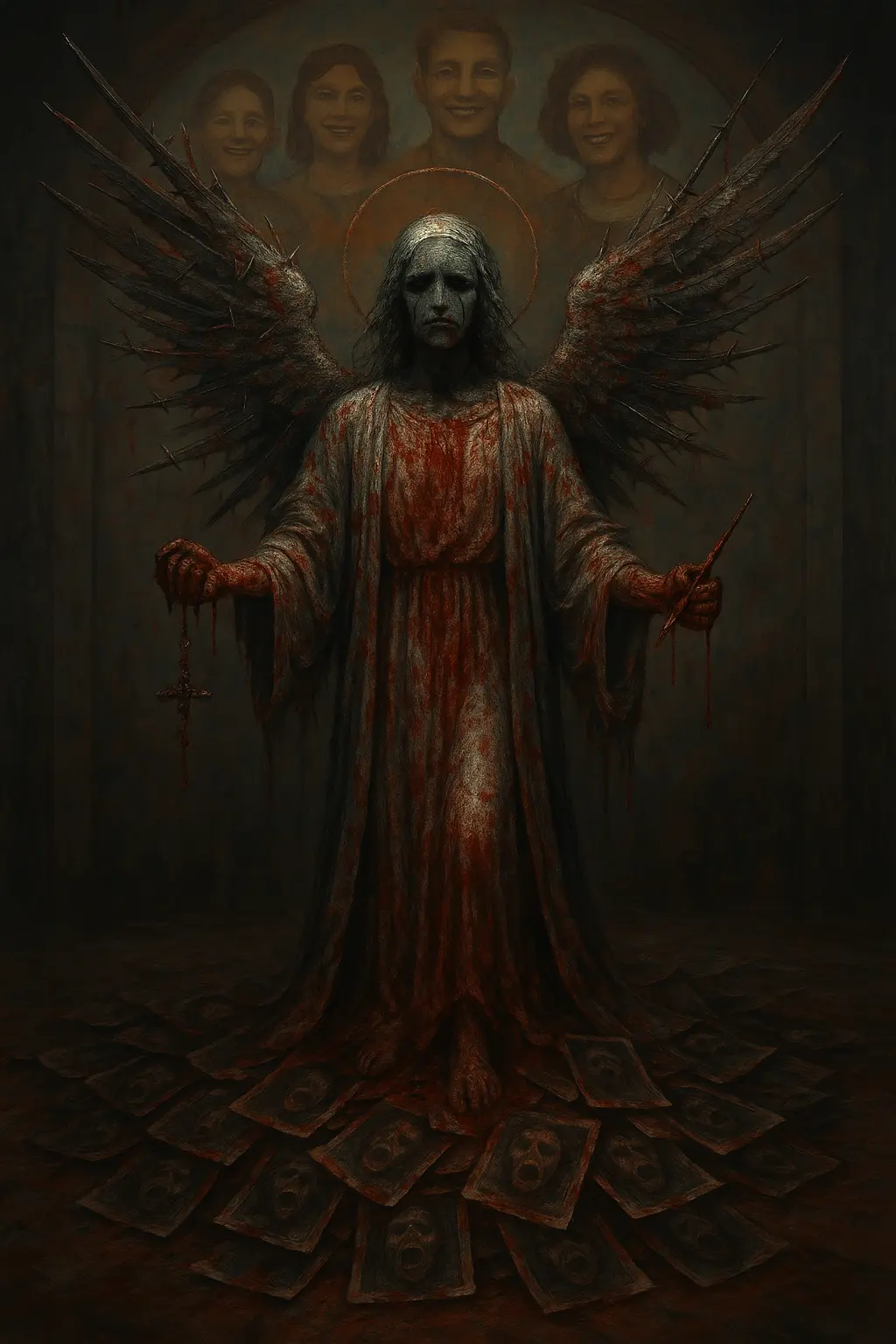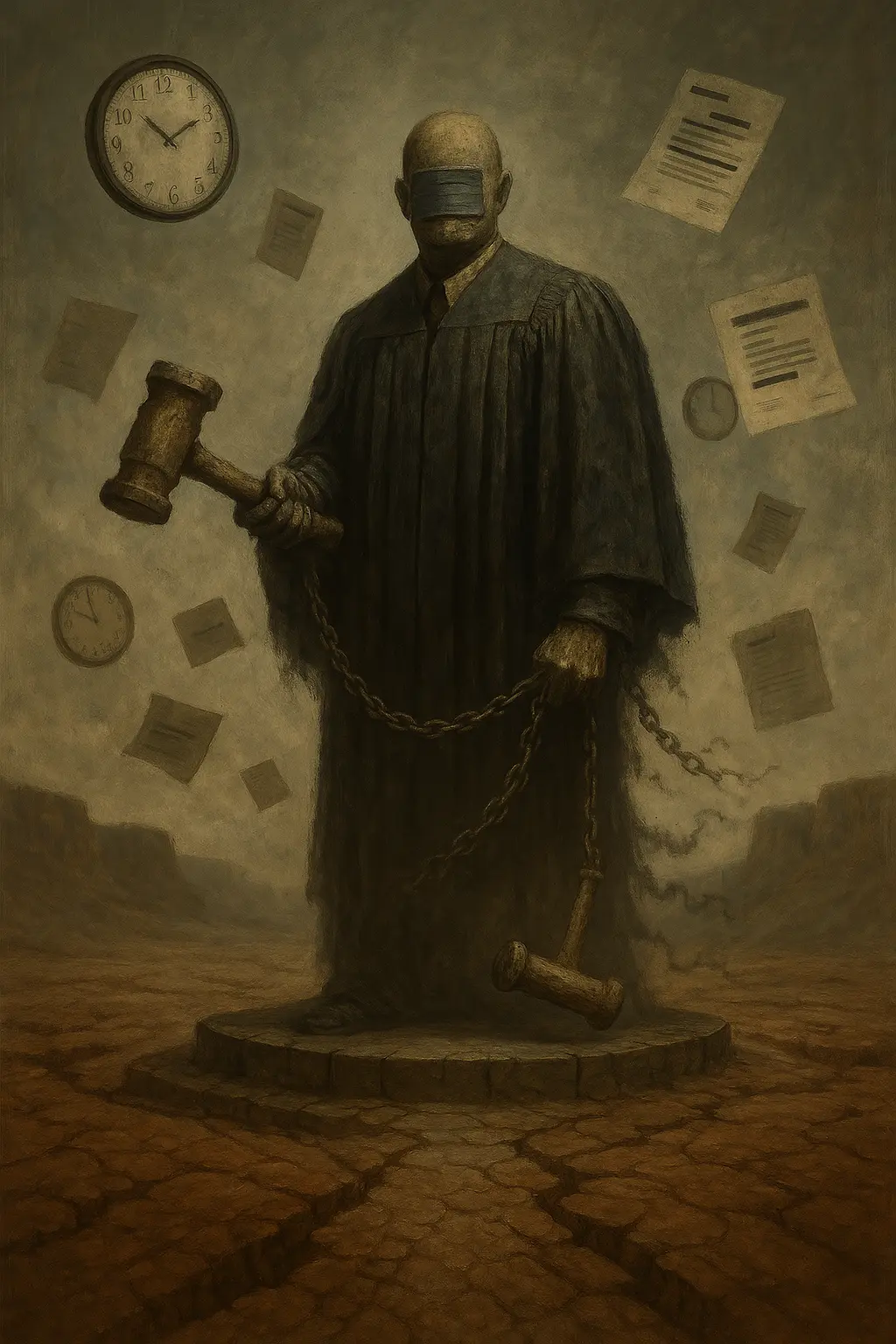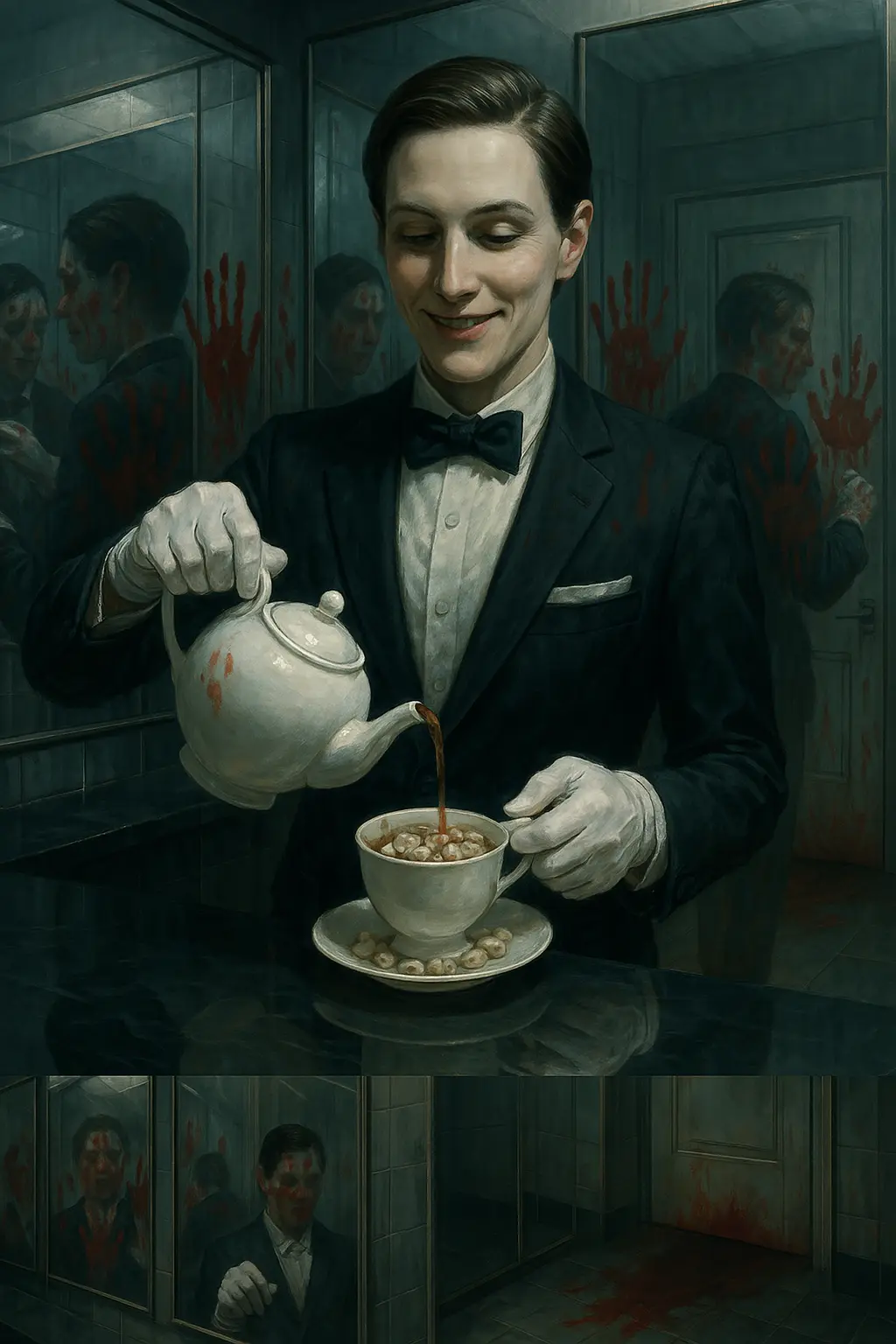The Lie That Built the House
6.1 What Is “The Lie”?
The Lie is not a myth. It is the official story—the one written in textbooks, echoed in church pews, carved into plaques, and paid for by the silence of those who should have known better.
It is the belief that:
- Power is earned.
- Justice is served.
- History is neutral.
- And that the land forgets.
But the land does not forget.
The land remembers everything.
And the Red Dirt bleeds not because it's cursed—but because the Lie never stopped being told.
6.2 Infrastructures of Silence
The Lie did not survive on magic. It survived because it was built into the bones of daily life. This section explores the mechanisms of suppression—mundane and supernatural—that keep the wound festering.
- Legal Silence – Eminent domain, disenfranchisement, zoning weaponized to erase cultural landmarks and spiritual hotspots.
- Religious Silence – Colonizing faith traditions that erased ancestral practices, reshaped cosmologies, and condemned memory as sin.
- Corporate Silence – Spiritual desecration hidden behind greenwashed development and corporate charity programs.
- Tribal Silence – Quiet collaboration with oppressive systems, born of survival, assimilation, or ambition.
- Supernatural Silence – Garou moots ruled by secrecy, Kindred political pacts that overwrite history, Mages who edit Consensus for comfort.
None of these are uniquely evil. That's the problem.
They all make sense—until you see what they've left behind.
6.3 The Choir Without Sound
Not a cabal. Not a cult. A pattern.
A system that sings only when no one is speaking.
These archetypes represent the metaphysical instruments of the Lie. Not always literal beings—sometimes spirits, sometimes roles people fall into, sometimes dreams that won't let go.

The Record-Keeper
Silence by curation. Authority by omission.
The one who controls what is remembered—and ensures the rest is unarchived, unspoken, unmourned.

The Martyr-Maker
Pain repackaged. Grief weaponized.
The one who turns loss into theater, suffering into currency, and justice into performance.

The Tongueless Judge
Policy without compassion. Enforcement without testimony.
The one who carries out verdicts without ever listening to the crime.

The Clean Hand
Solutions without root. Healing without history.
The one who offers peace only if you promise to forget what started the war.
These are not enemies to be slain.
They are patterns to be broken—if you can recognize when you're becoming them.
6.4 When the Lie Becomes Law
This section explores the cost of internalized erasure—what happens when supernatural beings believe the Lie so deeply that their powers begin to reflect it.
- Garou whose Gifts begin to fail in lands soaked with unacknowledged violence.
- Kindred who dream other people's memories—and think they're hallucinations.
- Mages whose resonance twists when they overwrite truth with “consensus.”
- Wraiths who forget their names—not because of Oblivion, but because no one living remembers them rightly.
- Fae who lose Glamour where joy was stolen and never mourned.
Even Demons feel it—as a false world rebuilding itself over their ruin.
The Lie doesn't just distort the land.
It rewrites you.
6.5 Breaking the House
This section offers ways to resist—not to “win”, but to make space for truth, survival, and memory.
- Build counter-narratives through storytelling, ritual, and spirit-binding.
- Form temporary autonomous zones where truth is told freely—and protected.
- Use dreamwalking, ancestor rites, or possession to reinsert truth into reality.
- Accept that not every silence can be undone—but no new ones have to be made.
Sometimes, the only way to break the Lie is to risk becoming what it fears most:
someone who remembers.
Permalink: http://heartlands.horizonvoid.com/core/chapter-vi.html